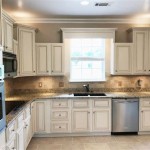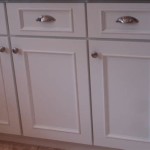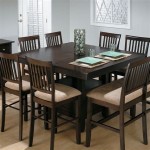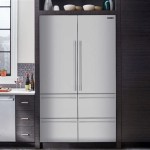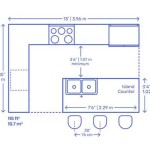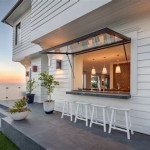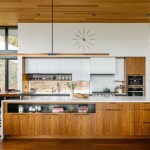Illuminating Your Workspace: A Comprehensive Guide to Over the Kitchen Sink Light Fixtures
The kitchen sink is a focal point in any home, serving as a crucial area for food preparation, cleaning, and various household tasks. Proper illumination is essential for safety, efficiency, and overall aesthetic appeal. Over the kitchen sink light fixtures are specifically designed to provide focused, task-oriented lighting, enhancing the functionality and visual appeal of this vital space.
Selecting the right light fixture for above the kitchen sink requires careful consideration of several factors, including the size of the sink and surrounding area, the existing kitchen decor, the desired level of brightness, and the type of tasks performed at the sink. This article provides a comprehensive guide to understanding over the kitchen sink light fixtures, exploring the various types available, key considerations for selection, and installation tips.
Understanding the Importance of Proper Kitchen Sink Lighting
Adequate lighting above the kitchen sink is not merely a matter of aesthetics; it significantly impacts the functionality and safety of the workspace. Insufficient lighting can lead to eye strain, making it difficult to perform tasks accurately and safely. It can also increase the risk of accidents, particularly when working with sharp objects or hot water.
Proper lighting, on the other hand, enhances visibility, allowing for precise and efficient task completion. It also contributes to a more pleasant and inviting atmosphere in the kitchen, making it a more enjoyable space to work in. Furthermore, well-chosen lighting can highlight the design elements of the kitchen, complementing the overall aesthetic.
Beyond functionality and safety, appropriate lighting can also influence mood and productivity. Bright, focused light can energize and improve concentration, while softer, diffused light can create a more relaxed and comfortable ambiance. Choosing the right type of fixture and light bulb can significantly impact the overall experience of working at the kitchen sink.
Types of Over the Kitchen Sink Light Fixtures
The market offers a diverse range of over the kitchen sink light fixtures, each with its unique characteristics and suitability for different kitchen designs and needs. Understanding the different types available is crucial for making an informed decision.
Pendant Lights: Pendant lights are a popular choice for over the kitchen sink lighting. These fixtures hang from the ceiling by a cord, chain, or rod, allowing for adjustable height and placement. They can provide focused task lighting or ambient illumination, depending on the style and bulb selection. Single pendant lights are suitable for smaller sinks, while multiple pendants can be used to illuminate larger areas. Pendant lights come in a variety of styles, from modern and minimalist to traditional and ornate, making it easy to find one that complements the existing kitchen decor.
Recessed Lighting: Recessed lights, also known as can lights, are installed flush with the ceiling, providing a clean and unobtrusive look. They are a versatile option for over the kitchen sink lighting, offering both task and ambient illumination. Recessed lights can be strategically placed to provide focused light on the sink area, while also contributing to the overall lighting scheme of the kitchen. They are particularly well-suited for modern and minimalist kitchens.
Track Lighting: Track lighting consists of a track mounted to the ceiling with multiple adjustable light heads. This allows for flexible lighting solutions, as the light heads can be positioned to direct light where it is needed most. Track lighting is a good option for kitchens with unconventional layouts or for those who want the ability to easily adjust the lighting direction. The individual lights can be adjusted to highlight specific areas, such as the sink, countertop, or other focal points.
Under-Cabinet Lighting: While strictly speaking, these lights are *under* the cabinets and not directly *over* the sink, they often serve to illuminate the sink area effectively, especially if the cabinets are positioned above the sink. Under-cabinet lighting provides direct task lighting, eliminating shadows and improving visibility. LED strip lights are a popular choice for under-cabinet lighting, as they are energy-efficient, long-lasting, and provide bright, even illumination. They are also relatively easy to install and can be customized to fit the length of the cabinets.
Flush Mount and Semi-Flush Mount Lights: These fixtures are mounted directly to the ceiling, providing a more subtle and integrated look than pendant lights. Flush mount lights are completely flush with the ceiling, while semi-flush mount lights have a short stem or base that extends slightly below the ceiling. These are suitable for kitchens with low ceilings or where a less obtrusive lighting solution is desired. They provide ambient lighting that can supplement other task-oriented lights in the kitchen.
Key Considerations When Selecting an Over the Kitchen Sink Light Fixture
Choosing the right over the kitchen sink light fixture involves a careful evaluation of various factors to ensure optimal functionality, aesthetics, and safety. Ignoring these considerations can lead to a poorly lit workspace that compromises both efficiency and the overall appeal of the kitchen.
Size and Placement: The size of the sink and the surrounding area should be considered when selecting a light fixture. A large sink may require multiple light sources or a larger fixture to ensure adequate illumination. The placement of the fixture is also crucial. It should be positioned directly above or slightly in front of the sink to provide focused light on the work surface. Consider the height of the ceiling and the distance between the light fixture and the sink to avoid glare and ensure comfortable visibility. If using pendant lights, ensure that they are hung at a height that does not obstruct the view or interfere with performing tasks at the sink.
Brightness and Light Output: The brightness of the light fixture is another important consideration. The amount of light needed will depend on the size of the sink area and the type of tasks performed there. Look for fixtures that provide adequate lumens (a measure of light output) for task lighting. LED bulbs are a popular choice due to their energy efficiency and long lifespan. Consider the color temperature of the light as well. Warmer light (around 2700-3000K) creates a cozy and inviting atmosphere, while cooler light (around 4000-5000K) provides brighter, more focused illumination, which is often preferred for task lighting.
Style and Design: The style of the light fixture should complement the overall design of the kitchen. Consider the existing cabinetry, countertops, and other fixtures when choosing a light fixture. There are a wide variety of styles available, from modern and minimalist to traditional and rustic. Choose a fixture that enhances the aesthetic appeal of the kitchen and reflects your personal taste. The finish of the fixture is also important. Consider finishes that are durable and easy to clean, such as brushed nickel, stainless steel, or oil-rubbed bronze.
Functionality and Features: Consider the functionality and features of the light fixture. Some fixtures offer adjustable brightness or dimming capabilities, which can be useful for creating different lighting moods. Others have integrated LED lights, which are energy-efficient and long-lasting. Consider fixtures that are easy to clean and maintain. Look for fixtures that are designed to withstand moisture, as the area above the kitchen sink can be prone to splashes and humidity. Some fixtures also offer additional features, such as pull-down sprayers or integrated soap dispensers, which can enhance the functionality of the sink area.
Energy Efficiency: Prioritize energy-efficient lighting options to reduce electricity consumption and lower energy bills. LED light fixtures are known for their energy efficiency, utilizing significantly less energy compared to traditional incandescent or halogen bulbs. Look for fixtures with the Energy Star label, which indicates that they meet strict energy efficiency standards. Using energy-efficient lighting not only saves money but also reduces the environmental impact of your home.
Safety Considerations: Electrical safety is paramount when installing or replacing any light fixture. Always turn off the power at the breaker box before working on electrical wiring. Ensure that the light fixture is properly grounded to prevent electrical shock. If you are not comfortable working with electrical wiring, it is best to hire a qualified electrician to install the light fixture. Consider the placement of the fixture in relation to water sources to minimize the risk of electrical accidents. Using a Ground Fault Circuit Interrupter (GFCI) outlet can provide additional protection against electrical shock.
Installation Tips and Best Practices
Proper installation of an over the kitchen sink light fixture is crucial for ensuring safety and optimal performance. Whether replacing an existing fixture or installing a new one, adhering to safety guidelines and following best practices is essential.
Preparation is Key: Before beginning the installation process, gather all necessary tools and materials, including a screwdriver, wire strippers, wire connectors, a voltage tester, and safety glasses. Turn off the power to the circuit at the breaker box and confirm that the power is off using a voltage tester. This step is crucial for preventing electrical shock. Carefully read the manufacturer's instructions for the light fixture and follow them closely. If replacing an existing fixture, take a picture of the wiring configuration before disconnecting it to ensure that you can reconnect the wires correctly. Ensure you have the correct mounting hardware for your ceiling type.
Wiring Connections: When connecting the wires, match the colors correctly. Typically, black wires are connected to black wires (hot), white wires are connected to white wires (neutral), and green or bare copper wires are connected to green or bare copper wires (ground). Use wire connectors to securely join the wires, ensuring that the connections are tight and insulated. Tuck the wires neatly into the electrical box, making sure that they are not pinched or damaged.
Mounting the Fixture: Follow the manufacturer's instructions for mounting the light fixture to the ceiling. Ensure that the fixture is securely attached to the electrical box and that it is level. If necessary, use shims to correct any unevenness. For pendant lights, adjust the height of the fixture to the desired level. For recessed lights, ensure that the trim is properly installed and secured. Double-check all connections and mounting hardware before turning the power back on.
Testing and Adjustments: After the installation is complete, turn the power back on at the breaker box. Test the light fixture to ensure that it is working correctly. If the light does not turn on, check the wiring connections and the bulb. If the light flickers or hums, there may be a loose connection or a problem with the bulb. Make any necessary adjustments to the fixture to ensure that it is properly aligned and providing adequate illumination. Clean the fixture and surrounding area to remove any dust or debris.
Professional Installation: If you are not comfortable with electrical work or if you are unsure about any aspect of the installation process, it is always best to hire a qualified electrician. A professional electrician can ensure that the light fixture is installed safely and correctly, complying with all applicable electrical codes. The cost of professional installation may be worth it to avoid potential electrical hazards or damage to your home.

Favorite Flush Mount Light Fixtures And New Sink Nesting With Grace

How To Choose Your Kitchen Lighting

Rustic Farmhouse Light For Country Decor Wooden Beam Ceiling Fixture Kitchen Strip Replacement With Hanging Pendant Lights Etsy

Choosing Kitchen Light Fixtures Lighting Design Tips Hgtv

The 15 Best Over Kitchen Sink Lighting Ideas Lightopia

53 Best Kitchen Sink Lighting Ideas

Vintage Light Fixture Over Sink Design Ideas

Over Kitchen Sink Lighting How To Enlighten Your Cooking Space

Best Kitchen Lighting For Your Cooking Space Stefana Silber

Lighting Over Kitchen Sink Design Ideas

